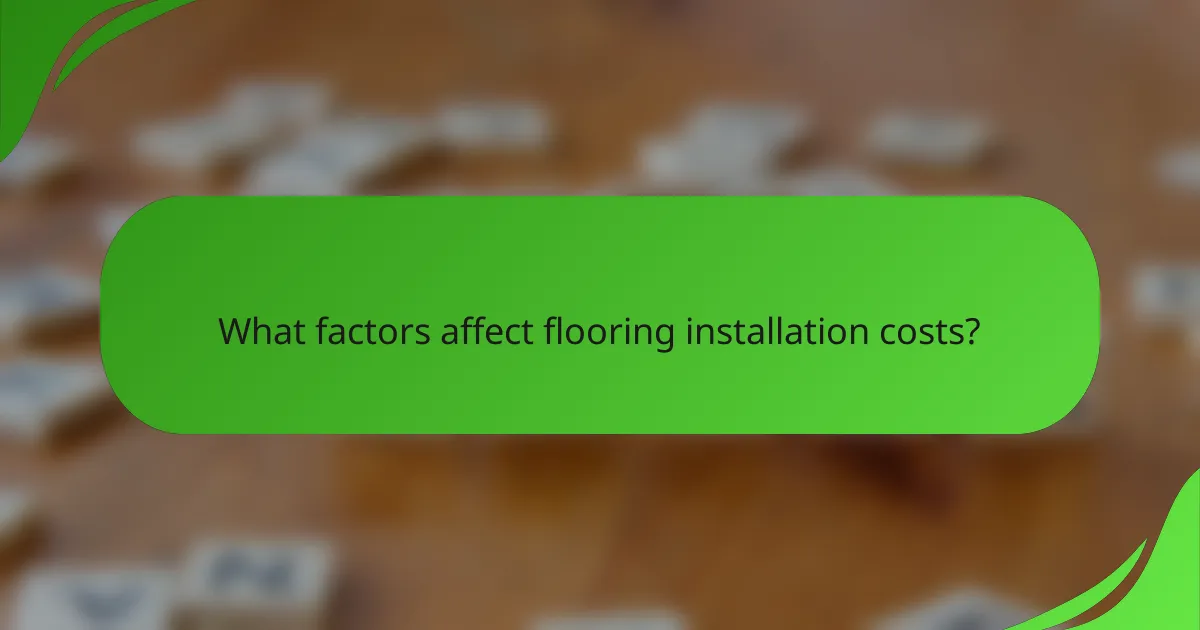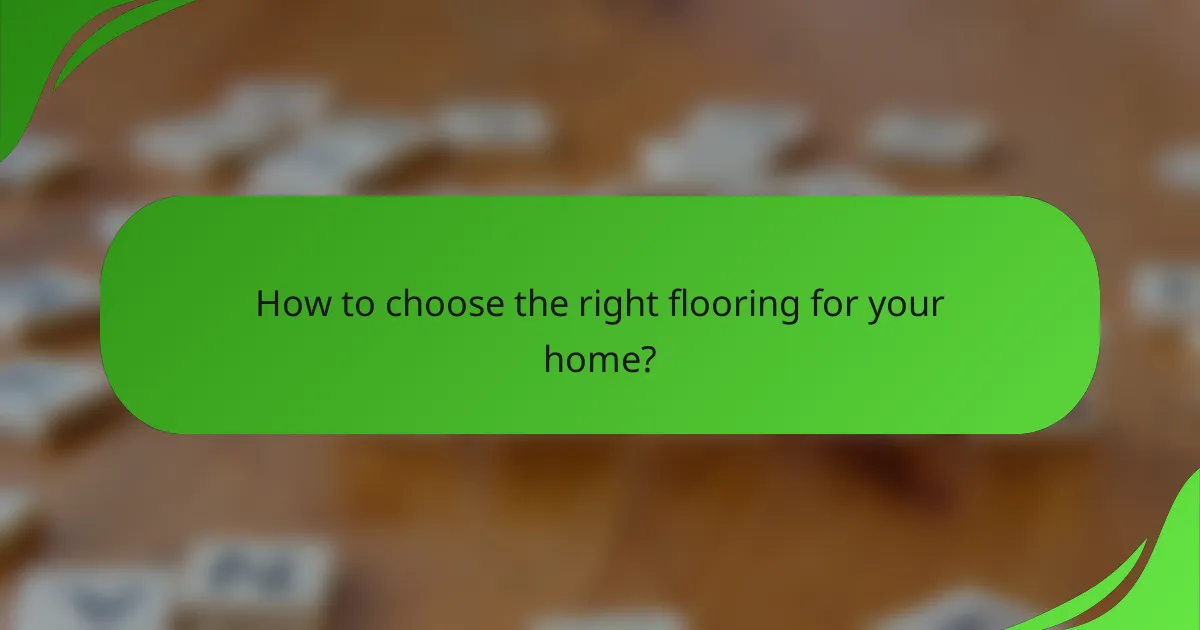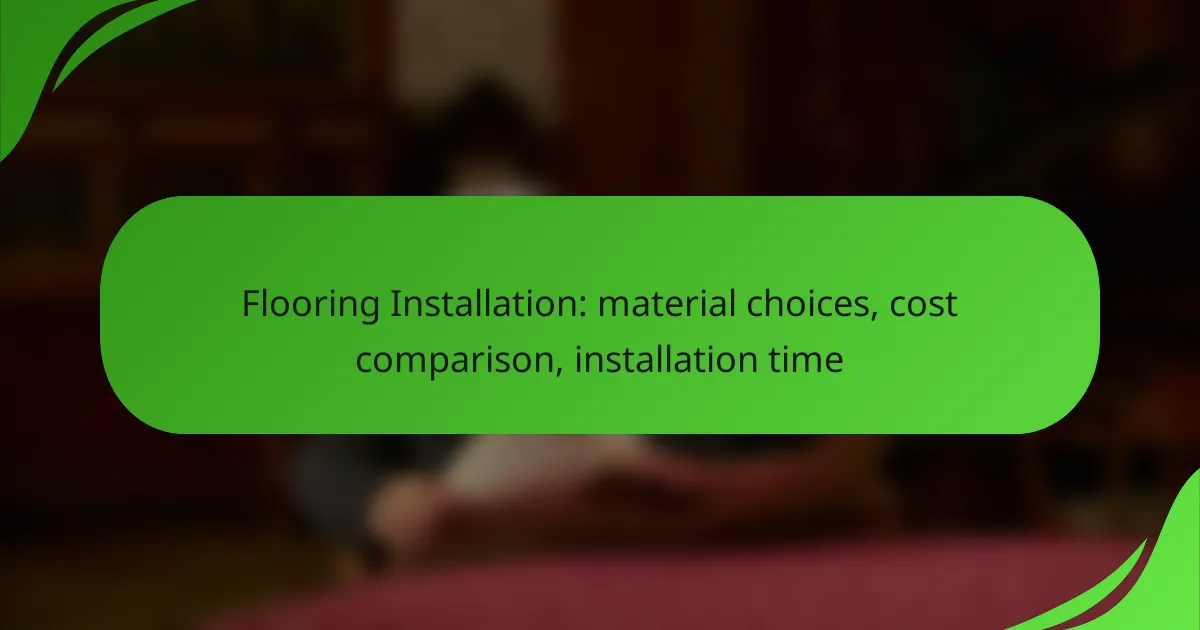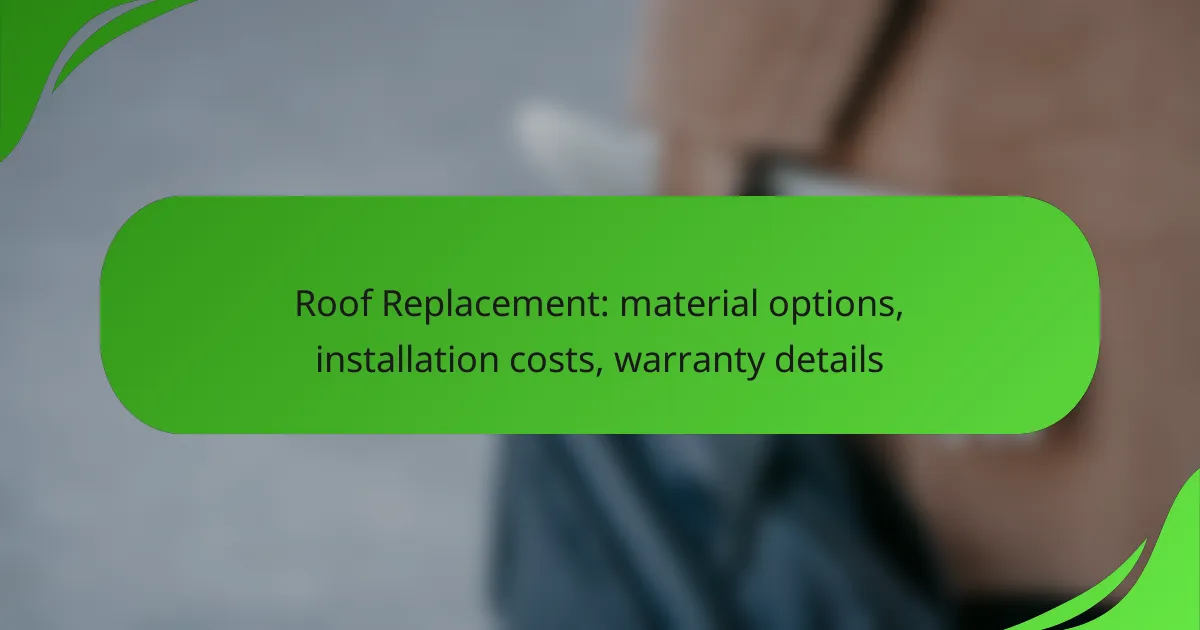Choosing the right flooring material involves considering durability, cost, and aesthetic appeal, with options like hardwood, laminate, vinyl, tile, and carpet each presenting distinct advantages. In the U.S., installation costs typically range from $3 to $10 per square foot, influenced by factors such as location and labor rates. Additionally, the time required for installation can vary widely, from a few hours to several days, depending on the material and the complexity of the project.

What are the best flooring materials for installation?
The best flooring materials for installation depend on factors such as durability, cost, and aesthetic preferences. Common options include hardwood, laminate, vinyl, tile, and carpet, each offering unique benefits and considerations for homeowners.
Hardwood flooring
Hardwood flooring is renowned for its timeless beauty and durability. It can last for decades if properly maintained, making it a popular choice for many homeowners. However, it typically comes at a higher price point, often ranging from $5 to $15 per square foot, depending on the wood species and finish.
When installing hardwood, consider the climate and humidity levels in your area, as these can affect the wood’s expansion and contraction. It’s advisable to hire a professional installer to ensure proper fitting and minimize the risk of damage.
Laminate flooring
Laminate flooring is an affordable alternative to hardwood, mimicking its appearance while offering greater resistance to scratches and moisture. Prices generally range from $1 to $5 per square foot, making it a budget-friendly option for many households.
Installation is relatively straightforward, often utilizing a click-lock system that allows for easy DIY projects. However, be cautious of low-quality products that may not hold up over time, and ensure the underlayment is adequate for sound and moisture control.
Vinyl flooring
Vinyl flooring is versatile and water-resistant, making it ideal for areas prone to moisture, such as kitchens and bathrooms. It typically costs between $2 and $7 per square foot, depending on the quality and type (sheet, tile, or luxury vinyl plank).
Vinyl can be installed over most existing floors, which can save on labor costs. Look for products with a strong wear layer to enhance durability and ease of maintenance, as well as options that are easy to clean and maintain.
Tile flooring
Tile flooring is highly durable and resistant to moisture, making it suitable for both indoor and outdoor applications. Prices can vary widely, from $1 to $20 per square foot, depending on the material (ceramic, porcelain, or natural stone).
While installation can be labor-intensive and may require professional help, the longevity and low maintenance of tile make it a worthwhile investment. Ensure proper sealing and grouting to prevent water damage and maintain the tile’s appearance over time.
Carpet flooring
Carpet flooring provides warmth and comfort, making it a popular choice for bedrooms and living areas. Prices typically range from $2 to $10 per square foot, depending on the material and pile height.
When selecting carpet, consider factors like stain resistance and durability, especially in high-traffic areas. Regular cleaning and maintenance are essential to prolong its lifespan and appearance, and professional installation is often recommended for the best results.

How much does flooring installation cost in the US?
The cost of flooring installation in the US typically ranges from $3 to $10 per square foot, depending on the material and complexity of the job. Factors such as location, labor rates, and additional services can also influence the total price.
Average cost per square foot
The average cost per square foot for flooring installation varies significantly based on the type of flooring chosen. For example, laminate flooring may cost around $2 to $8 per square foot, while hardwood can range from $5 to $15 per square foot, including installation.
It’s essential to consider both the material and installation costs when budgeting for a flooring project. Additional expenses, such as underlayment or removal of old flooring, can also add to the overall cost.
Cost comparison by material
When comparing flooring materials, vinyl, laminate, hardwood, and tile each have distinct price points. Vinyl flooring is often the most affordable option, ranging from $1 to $5 per square foot, while tile can vary from $3 to $20 per square foot, depending on the type and quality.
Hardwood flooring, known for its durability and aesthetic appeal, typically falls within the mid to high range, while laminate offers a budget-friendly alternative that mimics the look of wood. Consider your lifestyle and the room’s purpose when selecting the material.
Installation labor costs
Labor costs for flooring installation usually range from $1 to $5 per square foot, depending on the complexity of the job and the contractor’s experience. More intricate installations, such as tile or hardwood, may incur higher labor fees due to the skill required.
It’s advisable to obtain multiple quotes from contractors to ensure competitive pricing. Additionally, check for any hidden fees, such as charges for moving furniture or disposing of old flooring, to avoid surprises in your final bill.

What is the typical installation time for flooring?
The installation time for flooring varies significantly based on the material chosen, the size of the area, and the complexity of the job. Generally, installation can take anywhere from a few hours to several days, depending on these factors.
Hardwood installation time
Installing hardwood flooring typically takes longer than other materials due to the need for acclimation and precise fitting. On average, a professional can install hardwood in about 1 to 3 days for an average-sized room, depending on the complexity of the layout and any necessary subfloor preparation.
Consider that hardwood requires time for the adhesive to cure if glue-down methods are used, which can extend the overall project timeline. Additionally, if the hardwood is being sanded and finished on-site, this could add several days to the total installation time.
Laminate installation time
Laminate flooring installation is generally quicker than hardwood, often completed within a day for an average-sized room. The click-lock installation method allows for faster setup, as it does not require glue or nails.
However, if the subfloor needs significant preparation or if the laminate planks require cutting to fit around corners and edges, this could add a few hours to the project. Overall, expect laminate installation to take anywhere from a few hours to a full day.
Vinyl installation time
Vinyl flooring installation can be one of the quickest options, often completed in just a few hours to a day. The installation method, whether it’s peel-and-stick, glue-down, or click-lock, significantly influences the time required.
For example, peel-and-stick vinyl can be laid down rapidly, while glue-down vinyl may require additional time for the adhesive to set. Overall, anticipate that vinyl flooring installation will typically take less time compared to hardwood and laminate options.

What factors affect flooring installation costs?
Flooring installation costs are influenced by several key factors, including material quality, room size, and subfloor condition. Understanding these elements can help you budget effectively and make informed choices for your flooring project.
Material quality
The quality of flooring materials significantly impacts installation costs. Higher-quality materials, such as hardwood or luxury vinyl, tend to be more expensive but offer better durability and aesthetics. In contrast, budget options like laminate or carpet can lower upfront costs but may require more frequent replacement.
When selecting materials, consider not only the initial price but also the long-term value. Investing in quality materials can save money over time through reduced maintenance and replacement costs.
Room size
The size of the room directly affects the overall installation cost. Larger spaces require more materials and labor, leading to higher expenses. Conversely, smaller rooms may benefit from lower costs, but the price per square meter can sometimes be higher due to minimum material orders.
To estimate costs, measure the room accurately and calculate the square footage. This will help you get quotes from contractors and understand how size influences your budget.
Subfloor condition
The condition of the subfloor is crucial for a successful flooring installation. If the subfloor is uneven, damaged, or requires additional preparation, this can increase labor costs and material expenses. Ensuring a solid and level subfloor is essential for the longevity of the flooring.
Before installation, assess the subfloor for any issues. If repairs are needed, factor these costs into your budget. Addressing subfloor problems upfront can prevent costly repairs later on.

How to choose the right flooring for your home?
Choosing the right flooring for your home involves considering factors such as your lifestyle, the room’s function, and your budget. Different materials offer various benefits and drawbacks, so it’s essential to evaluate your specific needs before making a decision.
Consider lifestyle and usage
Your lifestyle and how you use each room significantly influence the type of flooring that will work best. For instance, high-traffic areas like hallways and living rooms may benefit from durable materials such as hardwood or tile, while bedrooms might be better suited for softer options like carpet.
Think about the activities that will take place in each space. If you have pets or young children, you may want to prioritize scratch-resistant and easy-to-clean surfaces. Conversely, if you enjoy hosting gatherings, consider flooring that can withstand spills and heavy foot traffic, such as laminate or vinyl.









